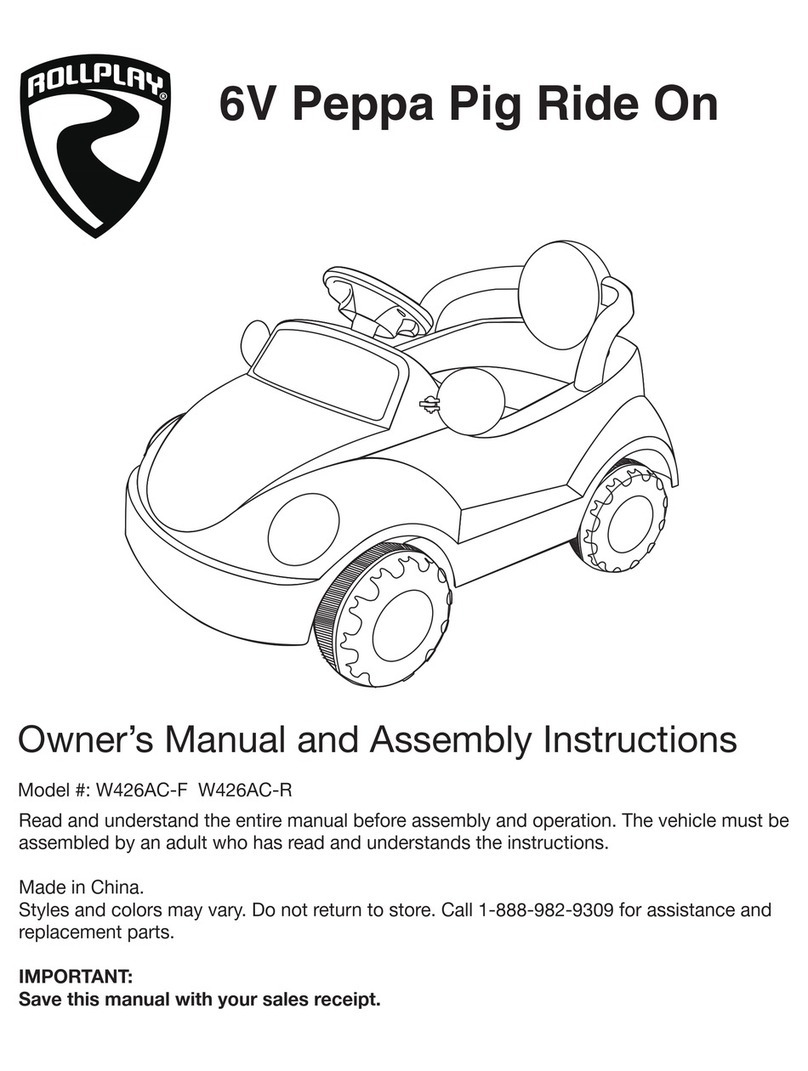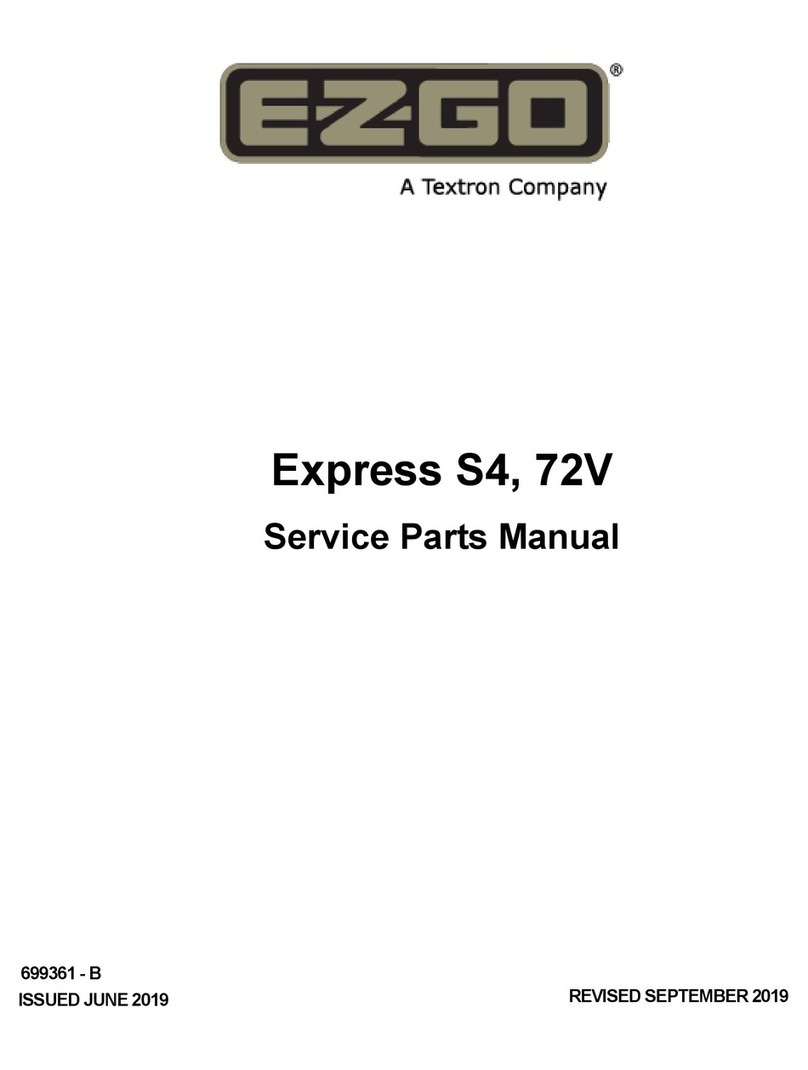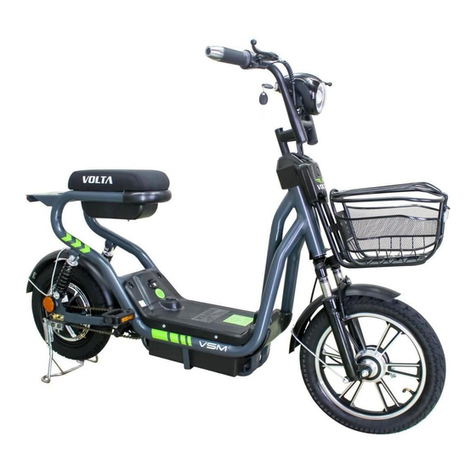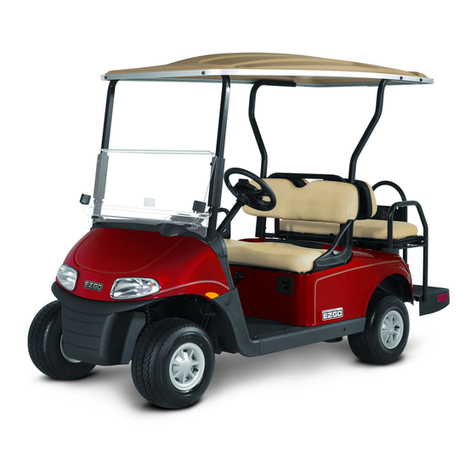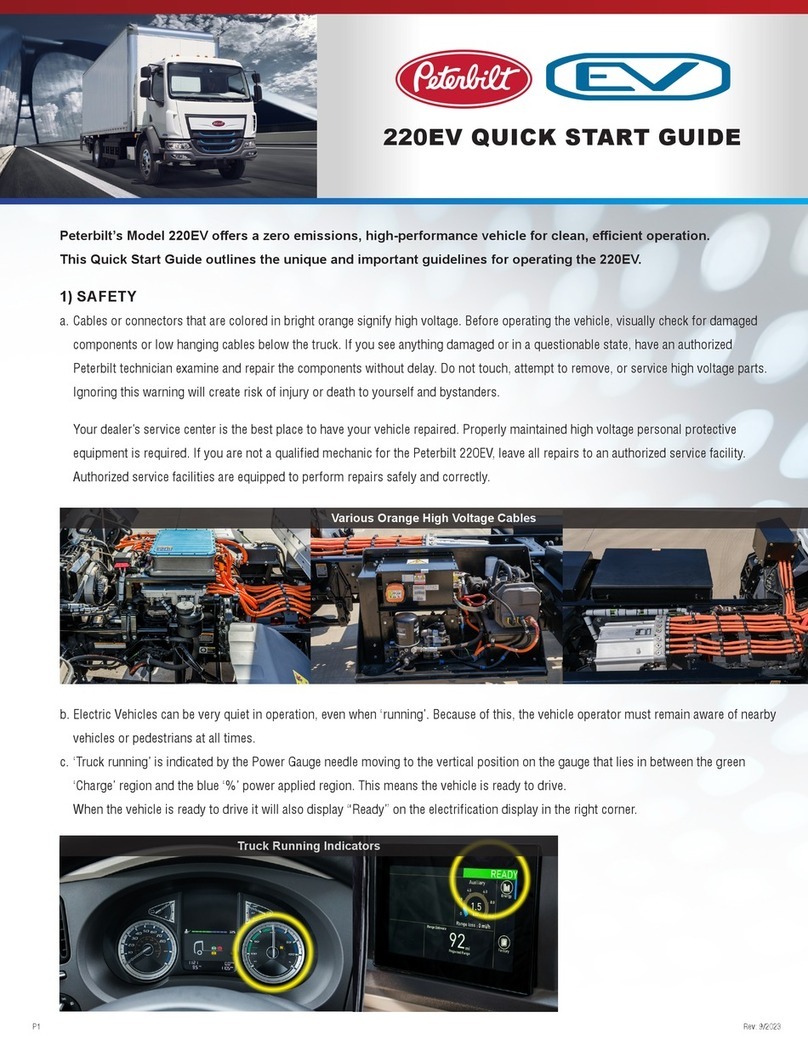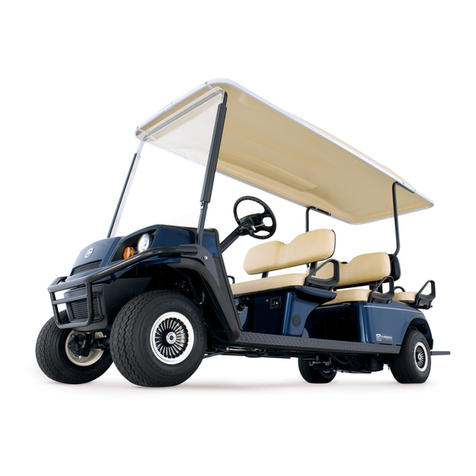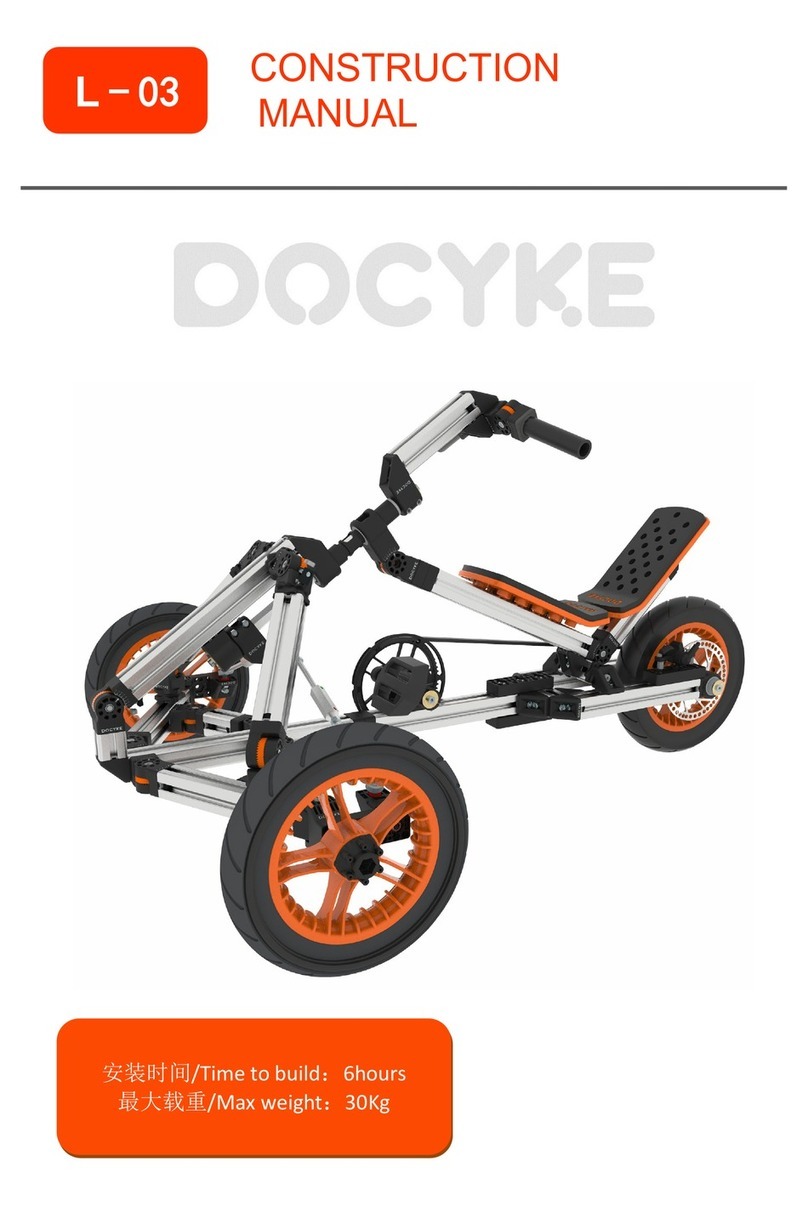
that all of the useful plates inside the batteries are utilized and will limit premature
failures. There is no harm in charging the vehicle as necessary to gain a full charge. It
is in fact recommended that you give the vehicle an opportunity charge whenever it is
not in use. The on-board chargers that come equipped on the vehicles are self
contained and fully automatic. The initial 20 charge cycles will equalize and “mature”
the pack to optimize their performance. During this time, the batteries may take extra
time to charge, (up to 16 hrs). After they reach their maturity, average charge time is
18-12 hrs. Once the batteries have reached their full capacity, the State Of Charge
meter on the dash will reset to indicate a full charge.
If the car is going to remain unattended for up to two weeks, turn the Tow/Run switch
to the Tow position and disconnect the charger. If the vehicle is to be stored over two
weeks, turn the Tow/Run switch to the Tow position and leave the charger plugged
into the car. The smart charger will monitor and maintain a static float voltage during
this time. When the vehicle is ready to be put back into service, unplug the charger
and plug it back in to ensure the maximum charge is given to the battery pack. Place
vehicle in run mode.
d) Watering
After the batteries have had a chance to receive a full charge is the only time you
should adjust the water levels. If you should notice that the plate is exposed prior to
charging, add just enough to cover the plate, then add appropriate amount after full
charge. Only distilled or pure water should be used to fill cells. Tap water contains
trace minerals that can plug the pores on the lead plate. The water levels of the battery
should ONLY cover the plate by ¼ to ½ of an inch. Do not fill battery water so the
level reaches the molded neck of the cell. The battery needs to be able to vent the
gases caused by charging; overfilling of the battery can cause the electrolyte to
overflow. This will reduce the amount of acid in the battery cell and can lead to
premature failure. If any acid is settling on the top of the battery, using a garden hose
as directed in battery cleaning will neutralize it and keep the battery from corroding.
Never add pure acid to a battery.
WARNING! Electrolyte is a solution of acid and water; avoid any contact with skin
and eyes. Wash any affected area with soap and water immediately after contact.
Flush eyes with water for 15 minutes. If irritation persists contact your local
physician.
e) Testing
Two types of tests to obtain a good indication of the battery charge level are the
Specific Gravity reading and an Open-Circuit Voltage reading. Seek a technician for
guidance. Any other type of tests should be conducted by a trained technician with
the appropriate tools.
The factory recommended gravity of a fully charged lead acid battery should read
1.277. The open circuit voltage of a fully charged lead acid battery should read 6.37v
or 50.93v for the full pack. (See Chart)

